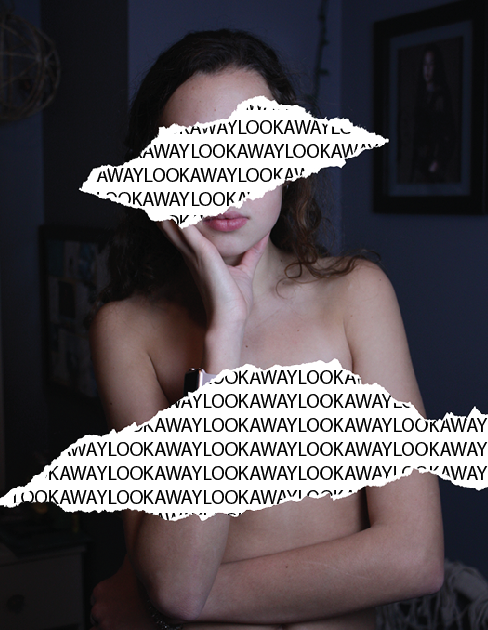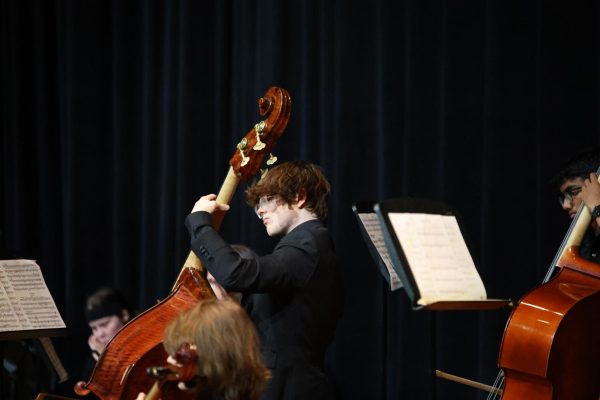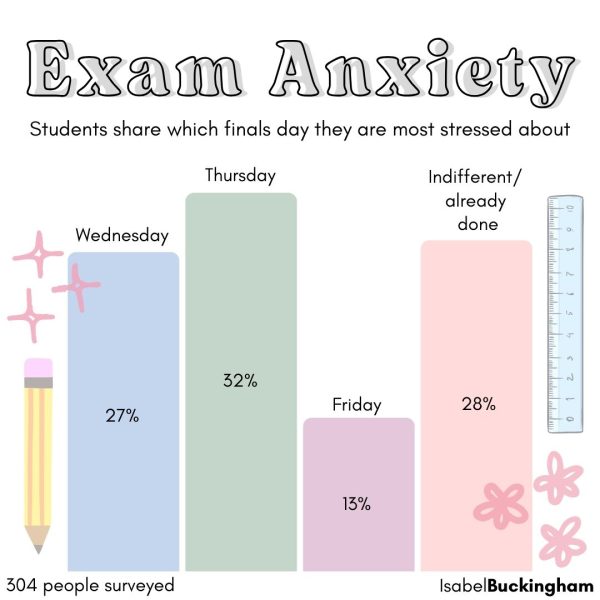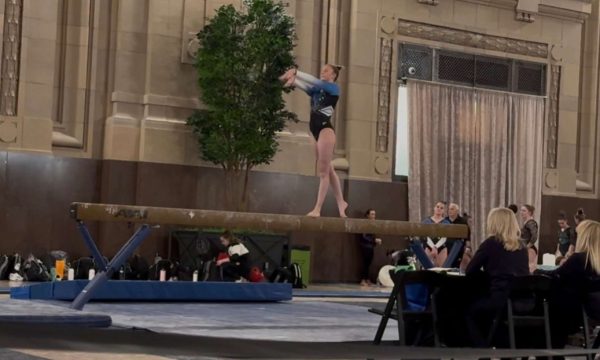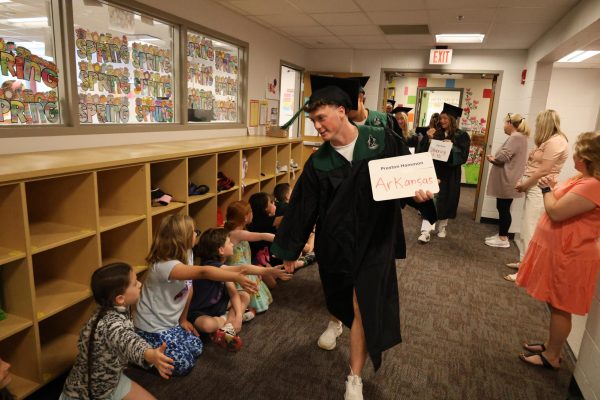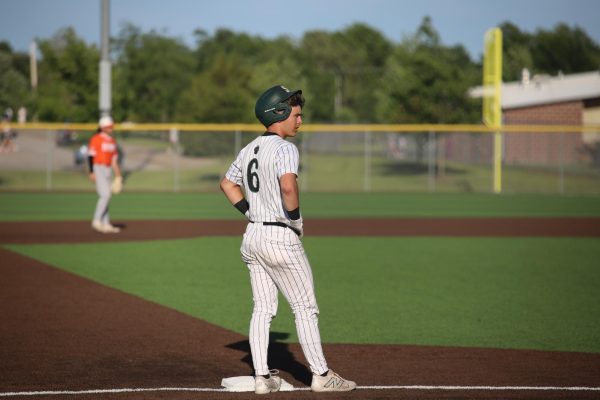Students and staff discuss limitations on what types of art can be displayed in the hallway
Sitting in portfolio, an art class, junior Nicci Toub faces the task of choosing what the subject of her series project will be, and finally settles on breast cancer.
Toub said effects of the disease is something very personal to her, as her mother was diagnosed when Toub was only 8 years old.
“She survived, but it’s something that’s close to my heart,” Toub said. “For my project, I wanted to involve breast of woman. I was informed that it cannot be in the hallways because it shows [breasts].”
Toub said art teacher Sarah McKee and student art teacher Emily Webb told her that her illustrations that included a woman’s breast were not able to be hung in the hallway. McKee said she has a couple ground rules with what pieces are allowed to be hung up in the hallway.
“I don’t really hang paintings and drawings with nudity in them just out of sensitivity to whoever might be offended by that,” McKee said. “I let students create that work sometimes, depending on what they are choosing to create … Anything beyond that, I use my best judgment. So anything that is particularly violent — if it stops and makes you think and you really make that judgment call that it is not appropriate, I handle those on a case-by-case basis. I would say very rarely do I decide not to hang something, but yeah, something that is very particularly violent might be a case where I would say ‘no.’”
At first, Toub said she was disappointed with the decision to not allow her illustrations up in the hallway. She said she was hurt by the fact that her intentions might not be perceived by her audience due to societal norms.
“I feel like the human body, a woman’s breast, is displayed in a sexual manner and that it shouldn’t be,” Toub said. “I think it’s a beautiful thing, and people that are diagnosed with breast cancer actually feel the impact of that when they have to get mastectomies and all these different surgeries. You’re not just losing that ‘sexual pleasure,’ but you’re losing that part of you, that womanly part of you. I feel like that’s important, too.”
However, after some time to think about it, Toub said she decided to change her piece to make it more school appropriate. She said it was more comfortable for her to cover the nipples of the woman in her piece, and she is much happier with the symbolism it has.
“I feel like it is more effective, but probably just because I’m adding more symbolism versus adding the nipples in it so I’m adding like the flower and the thorns that symbolizes pain and that kind of stuff,” Toub said.
Toub said she is happy with her final product, but wishes there was more clear guidelines to handle the situation in the future.
“I think that we should be able to talk to [assistant principal Erica] Warren or one of the administrators about this and say, ‘This is my piece, this is what it’s about, respect that that is what it’s about, let me show this to other students who might show that respect for it,’” Toub said. “I feel like even if it is somewhat controversial, have someone approve it and then be able to decide.”
McKee said her decision of whether or not an art piece should be put up in the hallways all depends on how the district might feel and how the viewer might feel.
“In terms of a school setting — where I think you have to stop — is anything that doesn’t follow school policy,” McKee said. “I think making art that’s personal to you or meaningful to you is really important to get that idea on paper or to get that idea out. But I think where it goes too far is anything that would make the viewer, a reasonable viewer, uncomfortable. Of course there are going to be viewers that are uncomfortable by almost anything, and other people who are uncomfortable by almost nothing, so if it’s just like a reasonable person and it’s gratuitous violence, gratuitous sex, something just really outrageous in terms of those aspects is generally what I look for.”
Senior SJ Dahms, another art student, said she understands the difficulties of deciding what is and what is not appropriate to display in a school setting.
“I think it’s kind of difficult to draw that line and to find out whether it’s necessarily important to create a line of censorship within schools because, a lot of times, there is expression of ideas that are extremely personal to the creator, and so it’s hard to censor an idea that someone is creating,” Dahms said.
Moving forward, Dahms suggested including descriptive artist statements explaining the intention behind a work.
“I think it’s more finding a balance between what the creator is intending and what the audience is taking from it,” Dahms said. “If the intention is not matching with what the audience is taking, maybe there needs to be a discussion between both parties. I don’t know, just being very clear in an artist statement on something controversial just like, ‘This is what I meant by this, it’s not meant to be offensive, but, here’s what I took from this piece of art.’ That way, the viewer can then look at that piece of art and be like, ‘Well, that’s how they intended it, if I’m offended, it’s kind of my fault.’”
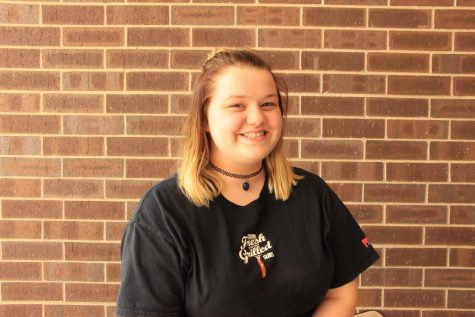
This is Olinger's second year on the Standard. She has absolutely loved being apart of the newspaper and has been since august, 2016. She won second place...


